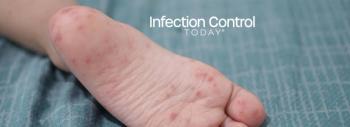
Teaching Nursing Students COVID-19 Safe Practices Through Serious Games
Developers designed a game to teach infection prevention during COVID-19 to senior nursing students.
Can playing a game help teach infection prevention? Investigators in Turkey aimed to develop a serious game [SG] and evaluate its effectiveness in preventing the spread of infection and developing safe behaviors during the COVID-19 pandemic as described in a
“Reminding health care workers, especially senior students, of the critical role they play in preventing COVID-19 transmission is more important than ever; therefore, it is vital to reinforce graduate students' intrinsic motivation to implement infection prevention and control guidelines,” Calik et al wrote in their study.
The authors demonstrated that implementing a serious game resulted in a significant increase in senior students’ knowledge of and adherence to COVID-19 infection and safe behaviors to lower the high prevalence of health care–associated infections.
The SG tested how much the players learned about COVID-19 infection and safe behaviors by playing a video game using an avatar to practice clinical situations. The game was played on various platforms such as smartphones, tables, laptops, and desktop computers. The game’s players went through the following sequence: Login screen, choose avatar screen, game progress screen, wear PPE screen, COVID-19 symptoms selections screen, quarantine period screen, and flowchart showing data collection procedure.
“In normal education and times, [instructors] could give students lots of practice at the bedside with different patients, diseases, and scenarios. With COVID, all that stopped,” Audrey Friedman, BSN, RN, CLNC, a former preceptor, told Infection Control Today®.
For the study, 62 senior nursing students were given a socio-demographic questionnaire, COVID-19 information form, and game usability form to complete. The investigators analyzed the nurses’ responses pre-test and post-test. “Most respondents (n = 57; 91.9%) were female with a mean age of 22.19 years and did not receive infection prevention and safe behaviors training but were informed by information obtained from official websites,” investigators reported in the study.
The students considered (n=58) the serious games an effective teaching strategy. The authors asked what was the students’ favorite aspect of the game. A few key answers were “It was nice that each stage of the game tested a new knowledge” and “The game created an opportunity for us to practice the nursing process.”
Because learning styles change, the team notes that their study “supports the need to adopt new teaching and assessment methods, such as SGs, to best match the future generation's learning styles and needs.” The results will provide guidance for designing future teaching strategies in nursing programs.
The team admits the increase in the personal protective equipment (PPE) knowledge level score between the pre-test and post-test was not significant, but the game did influence this slight increase. The students had the opportunity to play the game as much as they liked for a week, and playing the game allowed students to feel more confident about patient safety issues as the week went on.
“There was a significant relationship between the total mean scores of the pre-test and post-test (r = 0.061, P = .001). The PPE donning sequence initially displayed in the survey increased by 29.5% of the participants, but this did not reach significance,” the investigators said. “There was a significant difference in the responses regarding the isolation times of the patients with a diagnosis of COVID-19 who had mild symptoms, had no symptoms during the quarantine period, and their PCR tests were negative and the patients who had not [had] any symptoms (P < .00).”
The authors note that their study is one of the few studies investigating the effectiveness of an e-learning module as a tool for teaching COVID-19 safe practices. Further, based on the nursing students’ responses, the authors demonstrated that the SG helped the nursing students better learn and retain information about COVID-19. The students also reported significant improvements in their understanding of several aspects of the nursing responsibilities in the clinical practice, which is compatible with other current research.
Friedman agreed with the results of the study. “Simulation opportunity/serious games would give students time to have discussions like about isolation, no visitors, masking/no masking, patients dying without families around, refusing visitors—in safe, appropriate settings and not at the bedside or at the nurses station.”
However, the student nurses responded with a few key complaints about the game, which included that the SG “sometimes freezes or becomes unresponsive,” and can be “difficult to manage” and “played only with 1 person.” Some recommendations noted were: “Adding new stages and nursing knowledge” and “infrastructure of the game should be strengthened.”
Calik et al said in the study that it has some limitations, such as a small sample size and no control group, so the “findings cannot be compared to another training method and the results may pose risks in terms of reliability.” Any future game-based competencies need to have developed and set a quality standard and security measures.
Newsletter
Stay prepared and protected with Infection Control Today's newsletter, delivering essential updates, best practices, and expert insights for infection preventionists.






